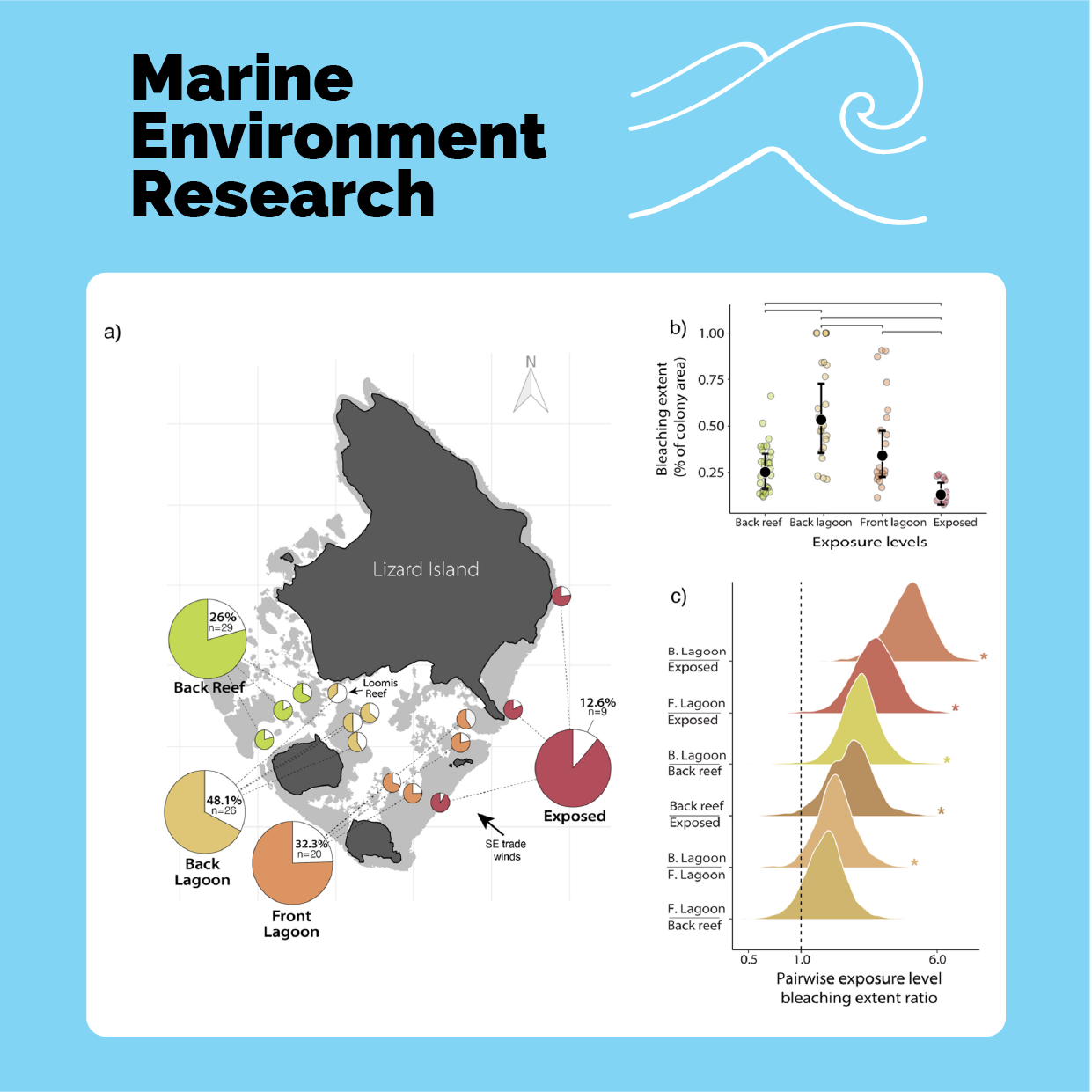Hot spots of bleaching in massive Porites coral colonies
Juliano Morais, Sterling Tebbett, Renato Morais & David Bellwood
Abstract:
Coral bleaching events have become more frequent and severe due to ocean warming. While the large-scale impacts of bleaching events are well-known, there is growing recognition of the importance of small-scale spatial variation in bleaching and survival probability of individual coral colonies. By quantifying bleaching in 108 massive Porites colonies spread across Lizard Island, Great Barrier Reef, during the 2016 bleaching event, we investigated how hydrodynamic exposure levels and colony size contribute to local variability in bleaching prevalence and extent. Our results revealed that exposed locations were the least impacted by bleaching, while lagoonal areas exhibited the highest prevalence of bleaching and colony-level bleaching extents. Such patterns of bleaching could be due to prolonged exposure to warm water in the lagoon. These findings highlight the importance of considering location-specific factors when assessing coral health and emphasize the vulnerability of corals in lagoonal habitats to rapid and/or prolonged elevated temperatures.

